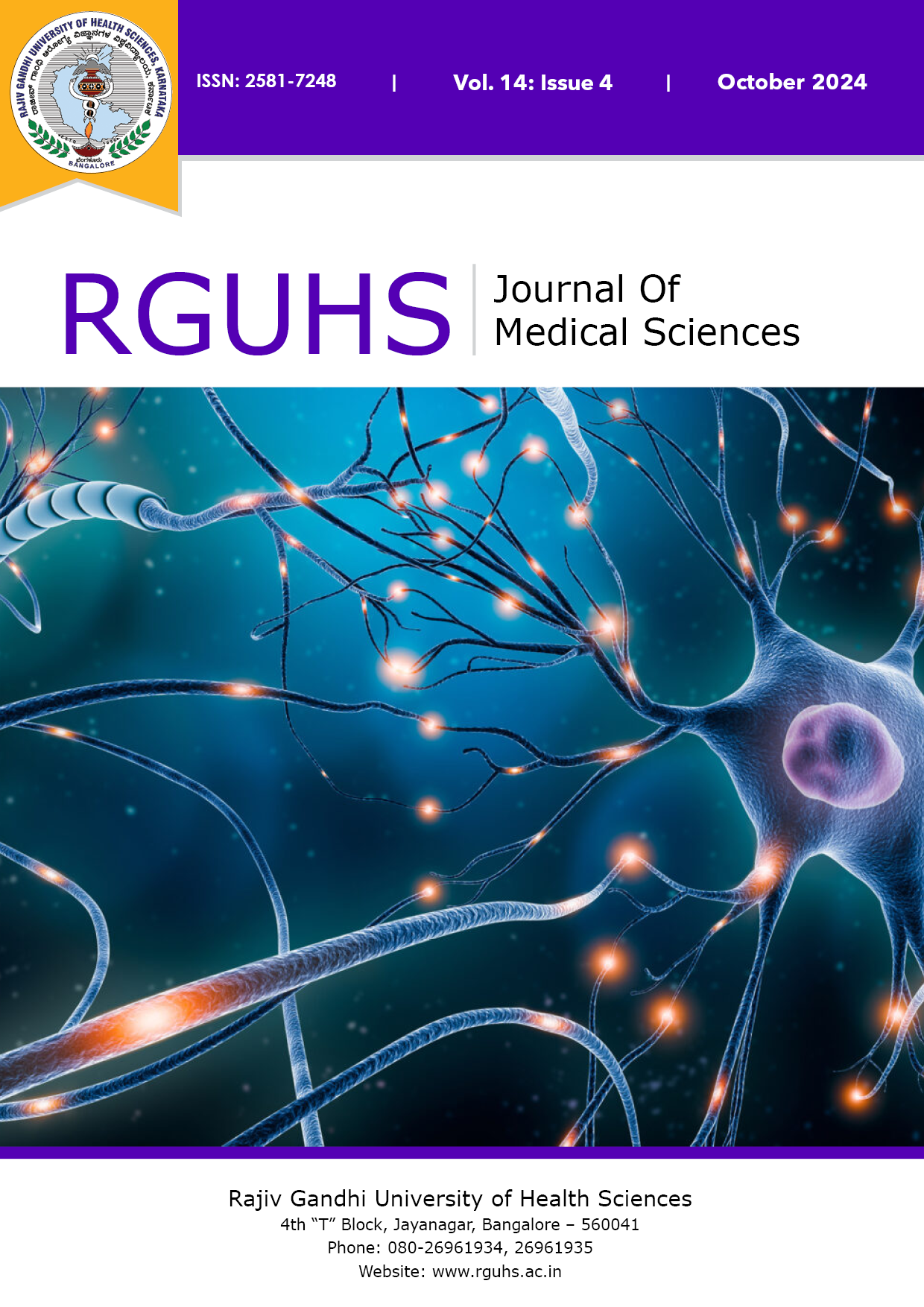
RGUHS Nat. J. Pub. Heal. Sci Vol: 15 Issue: 1 eISSN: pISSN
Dear Authors,
We invite you to watch this comprehensive video guide on the process of submitting your article online. This video will provide you with step-by-step instructions to ensure a smooth and successful submission.
Thank you for your attention and cooperation.
Sahithyaa J 1, Suguna E 2, Amol R Dongre3
1 Post Graduate, 2 Assistant Professor, 3 Professor and Head, Department of Community Medicine, Sri Manakula Vinayagar Medical College, Puducherry
Corresponding author
Dr Amol Dongre Professor and Head Department of Community Medicine SMV Medical College, Puducherry

Abstract
Objective: To study the feeding practices among Under-5 children in Vazhuthareddy and the socio demographic factors associated with it.
Material and Methods: The present study was undertaken in Vazhuthareddy, a field practice area of the Urban Health Training Center of Sri Manakula Vinayagar Medical College. About 700 Family folders of the urban slum Vazhuthareddy, were available in the centre, which had basic socio demographic details of the households. Out of the 160 households which had under -5 children, using simple random sampling a sample size of 100 households was selected. A pre-designed questionnaire was used to collect data about socio demographic characteristics and breastfeeding practices from the mothers of Under-5.The weight of the children were measured using calibrated Salter's scale and Infant weighing scale. Epi info software (Ver 3.5.4) and WHO Anthro(Ver 3.2.2) were used for statistical analysis.
Results: Among 100 under five children, 47 (47.0%) were male and 53 (53.0%) were female and 24(24.0%) were underweight for their age. Regarding breastfeeding practices, 72(72.0%) received breast milk within one hour after birth, 90(90.0%) had received colostrum. Pre-lacteal feeds were given to 16(16.0%) children and 15(15.0%) had received milk substitutes. About 72(72.0%) mothers were aware of exclusive breastfeeding. Practice of exclusive breastfeeding was asked to 95 mothers (since 5 mothers had infants under 6 months of age). Of 95 mothers, 61(64.2%) have practiced exclusive the breastfeeding. Among 90 children 30(33.3%) were weaned before 6 month. There was a significant relationship between gender and nutritional status, chi square value=4.031(p=0.04), exclusive breastfeeding on nutritional status, chi square value =13.07(p=0.003), exclusive breastfeeding awareness and its practice, chi square value = 43.02(p=0.00).
Conclusion: The findings suggest that colostrum feeding, exclusive breastfeeding and weaning practices were good among the study population. More female children were undernourished compared to male and undernutrition was high among children with poor breastfeeding practices. Recommendation: Nutrition and Health education has to be provided to the community, especially to the mothers of underweight children for its universal practice of breastfeeding.
Keywords
Downloads
-
1FullTextPDF
Article
None
Supporting File
References
None